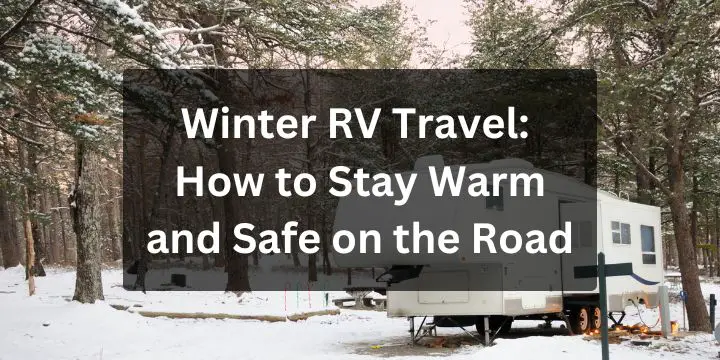
RV travel is synonymous with freedom and exploration, but not all roads are created equal. While some highways offer smooth sailing and scenic views, others present challenges that can turn your dream trip into a nightmare.
From poor road conditions to treacherous mountain passes, these are the worst roads for RV travel in the U.S. and the reasons they earn their notorious reputations.
1. I-10 Through Louisiana
- Why It’s Bad: This stretch of I-10 is infamous for its rough and uneven pavement, especially near Baton Rouge. Potholes and poorly maintained bridges can wreak havoc on an RV’s suspension and tires.
- Challenges for RVers: The constant jarring from uneven surfaces can damage cabinets, appliances, and other interior features. Tight lanes and heavy traffic add to the stress.
2. Highway 550 (The Million Dollar Highway) in Colorado
- Why It’s Bad: While breathtakingly beautiful, this highway is not for the faint of heart. Steep grades, hairpin turns, and sheer drop-offs with no guardrails make it one of the most dangerous roads in the country.
- Challenges for RVers: The narrow lanes and sharp turns are a nightmare for larger rigs. Weather conditions can quickly deteriorate, making it even riskier.
3. I-80 Through Wyoming
- Why It’s Bad: High winds and sudden weather changes are the main culprits. This interstate is notorious for wind gusts strong enough to tip over RVs.
- Challenges for RVers: Drivers must constantly monitor weather updates and may need to stop altogether during wind advisories. The long, desolate stretches can also make breakdowns especially stressful.

4. California’s Highway 1 (Big Sur)
- Why It’s Bad: This iconic road features stunning ocean views but comes with narrow lanes, tight curves, and steep drop-offs.
- Challenges for RVers: Larger rigs struggle with the tight turns, and there are limited pull-offs for stopping. The combination of tourists and local traffic adds to the congestion and difficulty.
5. I-285 in Atlanta, Georgia
- Why It’s Bad: Known as one of the busiest and most congested highways in the U.S., I-285 is a tangle of high-speed traffic, frequent accidents, and aggressive drivers.
- Challenges for RVers: Maneuvering a large vehicle in this chaos requires nerves of steel. The frequent lane changes and unpredictable traffic patterns can be overwhelming.
6. I-95 Through the Northeast Corridor
- Why It’s Bad: This stretch of highway runs through some of the most densely populated areas in the country, including New York City, Philadelphia, and Boston.
- Challenges for RVers: Traffic congestion, aggressive drivers, and tolls make this route a headache for anyone, let alone RV travelers. Narrow lanes and low overpasses add to the difficulty.
7. US Route 2 in Montana
- Why It’s Bad: This rural highway is notorious for its lack of services and long stretches without cell reception.
- Challenges for RVers: Breakdowns can leave you stranded for hours. The road is also poorly lit at night, increasing the risk of accidents with wildlife.
8. I-70 Through Glenwood Canyon in Colorado
- Why It’s Bad: This stretch of highway features steep grades and tight curves through a narrow canyon.
- Challenges for RVers: Construction projects and rockslides frequently cause delays. The tight quarters make it difficult for RVs to navigate safely.
9. US-129 (Tail of the Dragon) in Tennessee/North Carolina
- Why It’s Bad: Famous among motorcyclists, this road boasts 318 curves in just 11 miles.
- Challenges for RVers: The sharp turns and lack of shoulders make it virtually impassable for larger vehicles. RVers are strongly advised to avoid this road entirely.
10. Alaskan Dalton Highway
- Why It’s Bad: This remote highway is a mix of gravel and dirt, stretching over 400 miles of rugged terrain.
- Challenges for RVers: Limited services, rough conditions, and extreme weather make this road a test of endurance. RVs must be well-prepared for flat tires and mechanical issues.
Tips for Navigating Challenging Roads
While some roads should be outright avoided by RV travelers, others can be managed with careful preparation and planning. Here’s how to stay safe:
- Research Your Route: Use apps and forums to identify potential hazards along your planned route.
- Check Weather Conditions: Be aware of weather-related risks, such as high winds or snow.
- Travel During Off-Peak Hours: Avoid busy highways during rush hour or peak tourist seasons.
- Inspect Your RV: Ensure your vehicle is in top condition, with special attention to tires, brakes, and suspension.
- Know Your Limits: If a road seems too risky, don’t hesitate to find an alternative route.
Final Thoughts
The freedom of RV travel comes with its share of challenges, and navigating difficult roads is part of the journey. By understanding the risks and preparing accordingly, you can avoid the worst roads or tackle them with confidence. After all, the open road is meant to be enjoyed—not endured.
Read More: RV Electrical – Everything You Need to Know (Guide)


